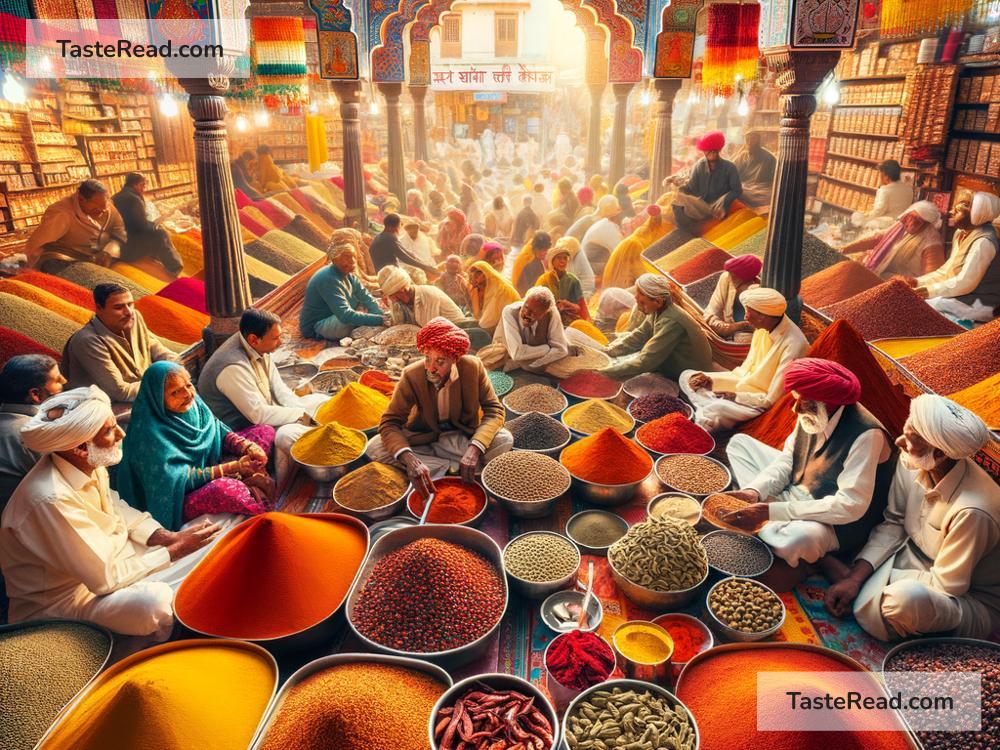Journeying Through the Vibrant Markets of Northern Indian Spices
India is globally famous for its spices. From saffron to turmeric, Indian spices are known for their rich flavors, vibrant colors, and incredible smells. But did you know that the heart of India’s spice culture lies in the bustling markets of Northern India? Exploring these markets is like diving into a treasure chest of culinary wonders—a feast for the senses that leaves you awestruck.
Whether it’s the crowded lanes of Old Delhi or the lively bazaars of Jaipur, Northern India is home to spice markets that tell stories of tradition, culture, and history. Walking through these markets feels like stepping into a world full of creativity and flavor. Let me take you on a journey through these fascinating spice havens.
What Makes Northern Indian Spices Special?
Northern Indian cuisine is famous for its bold, aromatic flavors, thanks to the diverse spices used in cooking. Each spice has its own importance and is carefully used to create balance and depth in dishes. Spices like cardamom, cumin, coriander, and fennel add unique tastes, while turmeric and red chili powder provide color and a hint of heat.
But it’s more than just flavor—it’s about the cultural significance. Spices play a big role in traditional Indian cooking, medicine, and even rituals. For centuries, India was one of the most important locations in the global spice trade, attracting explorers, merchants, and kings from around the world.
Wandering Through Old Delhi’s Spice Market: Khari Baoli
The first stop on this journey is Khari Baoli, Asia’s largest wholesale spice market. Located near the famous Red Fort in Old Delhi, Khari Baoli has been selling spices for over four centuries. This market isn’t just a place—it’s an experience.
As you explore narrow alleys filled with sacks of spices, dried fruits, and herbs, you’ll be greeted by strong scents of chili, cinnamon, and nutmeg. You’ll see busy shopkeepers weighing spices on ancient scales and negotiating with customers. It’s chaotic and loud, but it’s also inspiring to see the hustle and heart of this famous market.
Khari Baoli is the perfect place to buy high-quality spices at affordable prices. Whether you want fresh cloves, fragrant saffron, or powdered ginger, this market has it all. You might even spot exotic ingredients like dried rose petals, star anise, and black salt.
Exploring the Spice Shops of Jaipur’s Johari Bazaar
Jaipur, the vibrant capital of Rajasthan, is full of wonders, including markets that sell stunning jewelry, textiles, and, of course, spices. Johari Bazaar is a must-visit spot for anyone who loves shopping and exploring.
Here you’ll find beautifully packed boxes of turmeric, cumin seeds, and traditional spice blends like garam masala. While you shop, take a moment to talk to store owners. Many have been in the spice business for generations and are willing to share advice on how to use certain spices to bring your dishes to life.
Jaipur is also famous for spices used in traditional Rajasthani cuisine, such as coriander, fennel, and dried mango powder (amchur). These spices help make dishes like dal bati churma and gatte ki sabzi unforgettable.
Saffron: The Jewel of Northern Indian Spices
No journey through Northern Indian spices is complete without mentioning saffron. Known as “red gold,” saffron is one of the most valuable spices in the world. Northern India, particularly the valleys of Kashmir, is a major saffron producer.
While visiting spice markets, you’ll find saffron in small glass jars. Good quality saffron has long, dark strands, and its price reflects its rarity. Whether you’re making biryani, kheer, or traditional Kashmiri tea, saffron adds a touch of elegance and flavor to any recipe.
The Art of Choosing Spices
Part of the charm of spice markets is learning how to pick the best ones. The vendors aren’t just salespeople; they’re spice experts. They can guide you on how to choose the finest cardamom pods, the best quality cinnamon sticks, or the freshest turmeric powder.
When buying spices, look for vibrant colors and strong smells—these are signs of freshness. For example, fresh turmeric will have a bright golden-yellow hue, and whole spices like cloves and cinnamon should feel firm and smell intense.
Bringing the Magic Home
One of the best parts of visiting Northern Indian spice markets is bringing home a piece of the experience. Once you have your spices, experiment with Indian recipes or create your own spice blends. Even a simple dish can turn extraordinary with the right mix of flavors!
Spices also make great gifts for friends and family. Packed beautifully in small boxes or jars, they represent memories of your journey and the beauty of Indian culture.
Why Visit Spice Markets?
Northern Indian spice markets are more than just places to shop—they’re cultural landmarks. They combine history, tradition, and everyday life in a way that few other places can. Whether you’re a food enthusiast, a curious traveler, or someone who simply loves vibrant smells and sights, these markets are worth exploring.
Final Thoughts
Journeying through the vibrant spice markets of Northern India is like walking through a colorful dream. It’s noisy and busy, but it’s also magical. These markets remind us of the richness of Indian culture and the power of spices to bring people together.
Next time you find yourself in Northern India, don’t forget to visit these spice markets. They’ll inspire your cooking, awaken your senses, and leave you with unforgettable memories of adventure and flavor.


